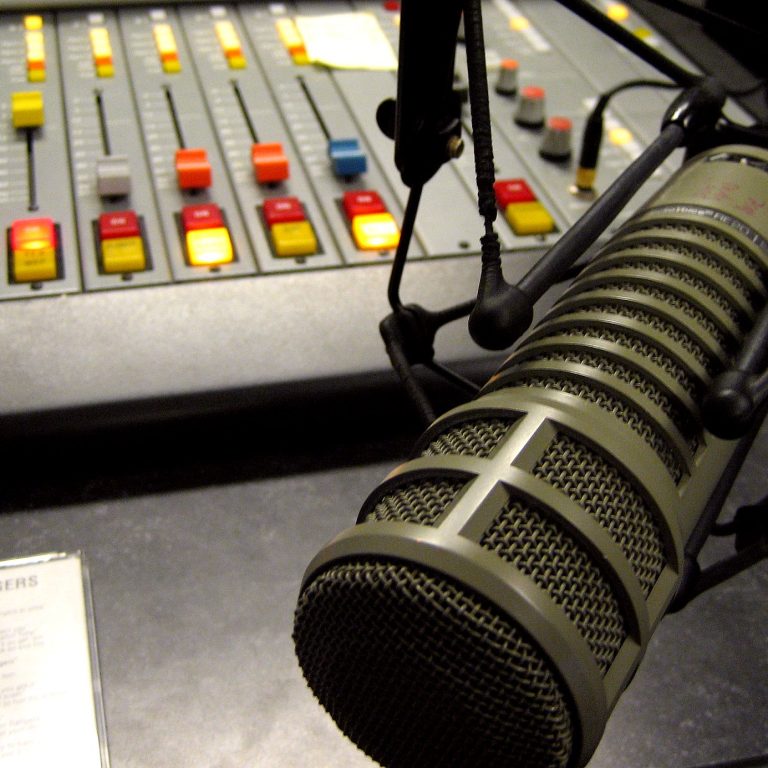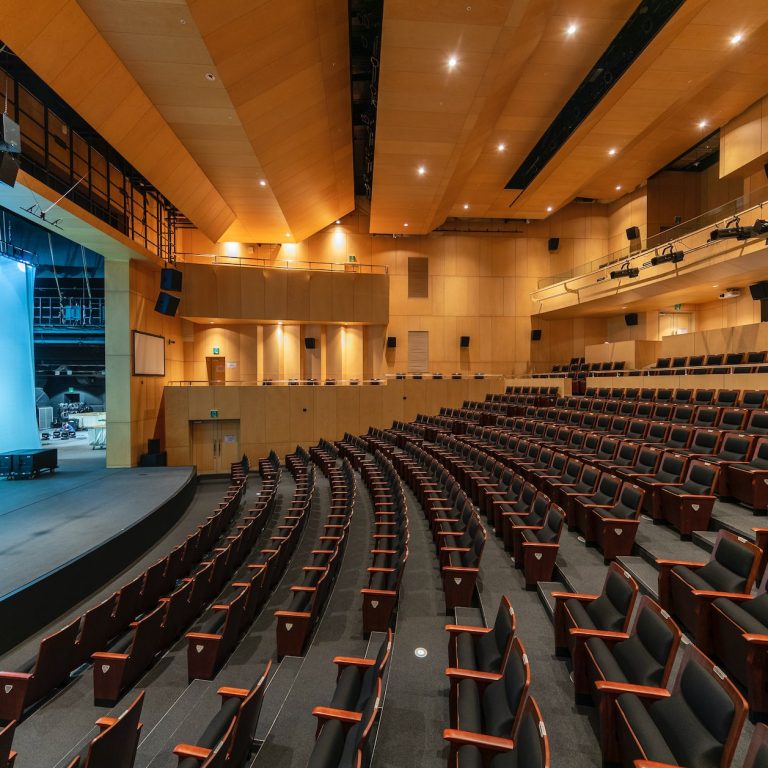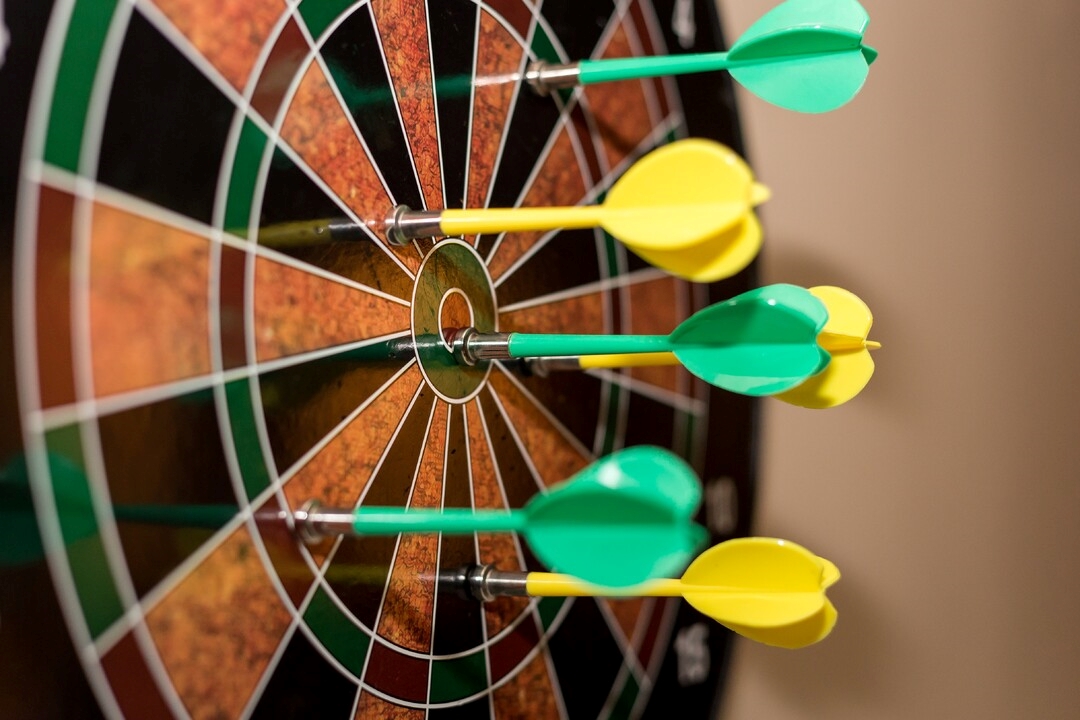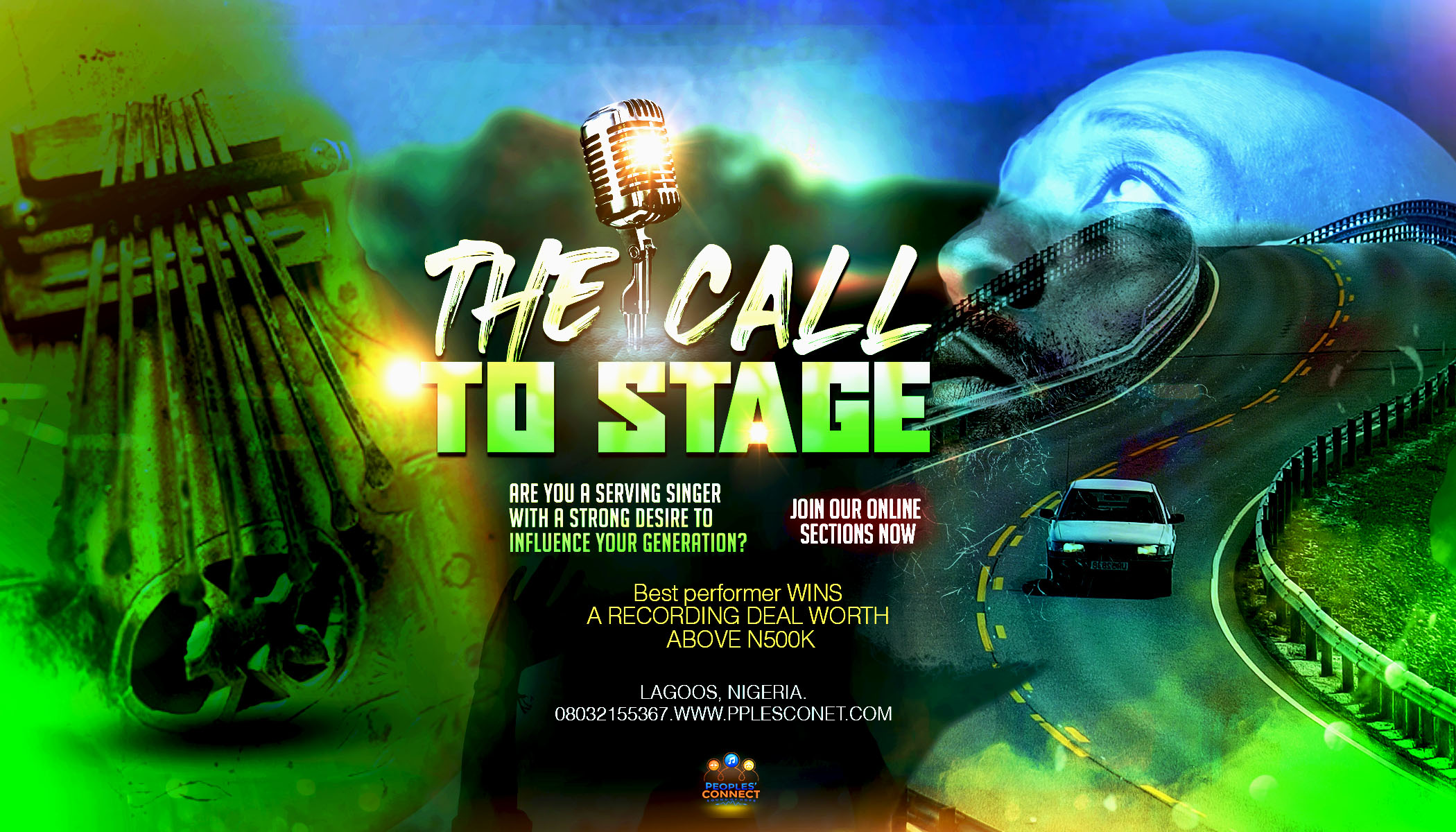PC Records is excited to announce the next coming song by Lifted Serimone Emontonghan, tagged Dream Again, Dropping, on June 8, 2024.
Lifted Serimone Emontonghan is a Nigerian singer and trumpeter whose life has happened over and over again but she will not give up. Dream Again is a song born out of the multiple challenges life keeps throwing at him, especially his divorce.
In the year 2017, the singer and trumpeter were robbed of their fame and glory by their relationship and were faced with giving up or holding on to hope. Dream again is his wake-up call to himself and everyone who has fallen and is struggling to rise up again.
It is possible to dream again.
Dream Again Nigeria
Indeed, the concept of vision extends beyond mere sight. It encompasses the ability to perceive a purpose, a direction, and a calling that transcends the mundane. As the ancient wisdom of Proverbs 29:18 reminds us, “Where there is no vision, the people perish” 1. This vision is not limited to physical eyesight but rather the inner clarity that propels us forward.
Men with vision are like architects of their own destiny. They construct bridges between aspirations and reality, laying down the blueprint for a meaningful existence. Let’s explore this further:
- The Visionary: A man with vision is not content with drifting through life. He gazes beyond the horizon, imagining possibilities, and then sets sail toward them. His purpose becomes a compass, guiding him through storms and calm seas alike.
- The Sleeper and the Waker: Some men merely exist, caught in the cycle of waking, working, and sleeping. They float along, carried by the tides of routine. But the visionary awakens each day with purpose—a hunger to create, to impact, and to leave a legacy.
- Profit Beyond Currency: While profit often implies financial gain, the true profit lies in fulfillment. Visionaries invest their days in pursuits that enrich their souls, leaving a mark on the world. They understand that life’s ledger isn’t just about dollars; it’s about impact.
- Dreams as Currency: Visionaries trade in dreams. They accumulate them, invest them wisely, and reap dividends of joy, meaning, and connection. Each dream is a seed planted in the fertile soil of possibility.
- The Morning Sun: Just as the sun rises each day, visionaries rise with purpose. They know that every dawn brings fresh opportunities—a canvas waiting for strokes of intention. They dream again, even when yesterday’s dreams seem distant.
So, my fellow travelers on this earthly journey, let us not merely pass by. Let us be architects, dreamers, and visionaries. For in the tapestry of existence, it is the threads of purpose that weave the most vibrant patterns.
Dream on, my friend. Dream boldly, and may your visions shape the world around you. ????
Stage Fright And How To Overcome It
Stage fright, or performance anxiety, has a long history dating back to ancient times. The Greek term “agoraphobia” was used to describe a fear of public spaces, and this fear extended to performing in front of an audience. In the Middle Ages, actors faced the challenge of performing on open-air stages, exposing them to the scrutiny of large crowds.
During the Renaissance, with the revival of theater, stage fright became a documented phenomenon. Shakespearean actors, for instance, were known to grapple with anxiety before performances. Over the centuries, as the performing arts evolved, stage fright continued to be a prevalent issue for actors, musicians, and public speakers.
Psychologists and researchers have explored the psychological aspects of stage fright, linking it to factors such as fear of judgment, social anxiety, and heightened self-awareness. Despite advancements in understanding, stage fright remains a common experience, affecting performers across various disciplines. Techniques such as relaxation exercises, visualization, and cognitive-behavioral strategies have been developed to help individuals cope with stage fright.
Stage fright management refers to the techniques and strategies used to overcome or manage the feelings of anxiety, nervousness, or fear that can arise before or during a stage performance or public speaking engagement. Stage fright, also known as performance anxiety, can affect performers of all levels, from beginners to seasoned professionals. Effective stage fright management can help individuals perform at their best and reduce the negative impact of anxiety on their performance. Here are some common stage-fright management techniques:

Deep breathing: Practice deep breathing exercises to calm the nervous system and reduce anxiety.
Positive self-talk: Replace negative thoughts with positive affirmations and self-encouragement.
Visualization: Imagine yourself performing successfully and receiving positive feedback from the audience.
Physical warm-up: Engage in physical warm-up exercises to release tension and physical energy.
Rehearsal and preparation: Thoroughly rehearse your performance or speech to build confidence and familiarity with the material.
Progressive muscle relaxation: Practice relaxing each muscle group in your body to reduce tension and promote relaxation.
Focus on the audience: Shift your attention from yourself to the audience, focusing on how you can connect with and engage with them.
Utilize relaxation techniques: Try techniques such as meditation, guided imagery, or mindfulness to promote relaxation and reduce anxiety.
Seek support: Talk to a trusted friend, mentor, or therapist about your stage fright and seek their guidance and support.
Gradual exposure: Gradually expose yourself to performing in front of smaller audiences or in low-stakes situations to build confidence over time.

Remember that stage fright is a common experience and that you are not alone in facing it. With practice and the use of these management techniques, stage fright can be effectively managed, allowing performers to deliver their best performances.
Although stage fright can be uncomfortable and challenging to deal with, it also has some advantages:
Increased focus: Stage fright can heighten your focus and concentration on your performance. When you are nervous, you are more likely to pay attention to every detail and give your best effort.
Improved performance: While stage fright can initially hinder your performance, it can also serve as a motivation to practice more and work harder. This can lead to improved performance as you dedicate extra time and effort to overcome your anxiety.
Adrenaline rush: The surge of adrenaline that comes with stage fright can actually boost your energy and excitement on stage. It can make your performance more dynamic and engaging as you tap into the rush of adrenaline and channel it into your performance.
Learning experience: Successfully managing stage fright can provide you with a valuable learning experience. It can help you develop resilience, self-confidence, and the ability to handle stressful situations not just on stage but in other aspects of your life as well.
Personal growth: Overcoming stage fright can lead to personal growth and a sense of accomplishment. It can boost your self-esteem and give you a sense of empowerment, knowing that you were able to conquer your fears and perform in front of an audience.
Connection with the audience: Dealing with stage fright can make you more relatable and human to the audience. It allows them to see your vulnerability and can help create a connection or empathy with the audience.
Building character: Managing stage fright builds character and develops skills such as resilience, determination, and problem-solving. It can help you develop a strong work ethic and the ability to persevere in challenging situations.
It’s important to note that while stage fright can have these advantages, it is still essential to work on managing and overcoming it to ensure that it does not negatively impact your performance. With practice, support, and effective stage fright management techniques, you can harness the benefits of stage fright while minimizing its drawbacks.

The waste record from a negative effect of stage fright on a renowned artist
One notable case of stage fright affecting a renowned artist is Barbra Streisand’s experience during a 1967 concert in Central Park. The performance was a high-profile event, and Streisand, despite her successful career, experienced intense anxiety and stage fright.
The negative impact was evident as she forgot lyrics, struggled with her vocal performance, and even broke down in tears on stage. The media covered the incident extensively, magnifying the impact of her stage fright on her reputation at that moment.
However, it’s important to note that Streisand’s career ultimately persevered, and she continued to achieve remarkable success despite this setback. This event serves as a reminder that even accomplished artists can grapple with stage fright, highlighting the psychological challenges that performers may face throughout their careers.
How Music Works
Music works by using sound and rhythm to create patterns and organized sequences of notes and chords. It is made up of various elements such as melody, harmony, rhythm, and dynamics.
Melody: It is the main line of a song or a tune that is created by a sequence of notes played or sung one after another. Melodies are often memorable and provide a recognizable “hook” for listeners.
Harmony: It refers to the combination of different notes played or sung simultaneously to create chords. Harmony adds depth and enhances the emotional impact of the music.
Rhythm is the pattern of sound and silence in music. Rhythm gives music its groove and helps to establish a beat or pulse. It is created by the duration and spacing of notes and rests.
Dynamics: It refers to the volume and intensity of the music. Changes in dynamics add variations, contrast, and expression to a composition. For example, a loud section might convey excitement or intensity, while a soft section can create a feeling of intimacy or calm.
Music is typically written and composed using a musical notation system, such as sheet music or written lyrics with chord symbols. This notation allows musicians to read and interpret the written instructions, allowing them to accurately perform the music.

In contemporary music, technology and digital production techniques also play a significant role. Various instruments, effects, and software allow musicians and producers to create different sounds, manipulate recordings, and add layers to enhance the overall musical experience.
How do people experience music? People experience music in various ways, and it can have a profound impact on emotions, thoughts, and physical sensations. Here are some common ways in which people experience music:
1. Emotional Response: Music has the power to evoke strong emotions. It can make us feel happy, sad, nostalgic, excited, or calm. Different genres and styles of music can elicit different emotional responses in individuals.
2. Physical Sensations: Music can create physical sensations and reactions in the body. It can make us dance, tap our feet, or nod our heads to the beat. The vibrations from the sound can resonate within us and create a physical connection to the music.
3. Cognitive Stimulation: Music can stimulate cognitive processes and mental activity. It can enhance focus, concentration, and memory. Many people find that music helps them to think, study, or work more effectively.
4. Personal Connection: Music often holds personal significance and meaning for individuals. Certain songs or genres may remind them of specific events, people, or experiences in their lives. Music can provide comfort, solace, or inspiration and can also be an outlet for expressing and processing emotions.
5. Social Connection: Music is a universal language that brings people together. It can facilitate social bonding and create a sense of community. People attend concerts, sing in choirs, play in bands, or simply gather to listen to and appreciate music together.
6. Escapism and Entertainment: Music can transport us to different worlds and provide an escape from reality. It can be entertaining and serve as a form of leisure and enjoyment. People experience music subjectively, and the way they connect with and interpret it can vary greatly from person to person. It is a unique and personal experience that can have a profound impact on our lives.

Brief history of Music: The history of music is a vast and complex subject that dates back thousands of years. Here is a brief overview of key developments and periods in the history of music:
Ancient Music: The earliest known form of music dates back to prehistoric times, with evidence of musical instruments found in ancient caves. – Ancient civilizations such as Mesopotamia, Egypt, Greece, and Rome had rich musical traditions. Music played a significant role in religious ceremonies, entertainment, and social gatherings.
Medieval Music: From the fall of the Roman Empire in the 5th century to the 15th century, the medieval period saw the development of Western classical music. – Gregorian chant, a form of sacred vocal music, was widely practiced during this era. – Secular music, including troubadour songs and early forms of polyphony (multiple melodies sung or played simultaneously), started to emerge.
Renaissance Music: The Renaissance period (15th to 17th centuries) marked a rebirth of the arts and sciences, including music. Composers such as Josquin des Prez and Giovanni Palestrina created polyphonic choral music that emphasized clarity and expression. – Musical instruments continued to evolve and become more sophisticated.
Baroque Music: The Baroque era (17th to mid-18th centuries) is characterized by ornamentation, elaborate melodies, and rich harmonies. Prominent composers include Johann Sebastian Bach, George Frideric Handel, and Antonio Vivaldi. – The development of opera, orchestral music, and keyboard instruments significantly influenced this period.
Classical Music: The Classical era (mid-18th to early 19th centuries) is known for its balance, clarity, and formal structure. – Composers like Wolfgang Amadeus Mozart, Ludwig van Beethoven, and Franz Joseph Haydn produced symphonies, sonatas, and chamber music. The piano has become increasingly popular as a solo instrument.
Romantic Music: The Romantic period (19th century) emphasized individual expression, emotions, and experimentation. – Notable composers of this era include Ludwig van Beethoven, Franz Schubert, Frederic Chopin, and Richard Wagner. Orchestras grew in size and complexity, and a wider range of instruments was incorporated.
20th Century and Modern Music: The 20th century saw the rise of various musical movements, including Impressionism, Expressionism, Jazz, Blues, Rock, and Pop. – Composers like Igor Stravinsky, Claude Debussy, Arnold Schoenberg, and Karlheinz Stockhausen pushed the boundaries of traditional music. – Technological advancements led to electronic music, computer-based composition, and popular music genres continuing to evolve.
Today, music encompasses a vast array of styles, genres, and influences from different cultures worldwide, highlighting its dynamic nature and ongoing evolution throughout history.

The healing power of music has been recognized for centuries, but the exact mechanisms behind its effectiveness are not fully understood. However, several theories and explanations shed light on why music has a profound impact on our emotions, well-being, and even physical health.
Emotional and Psychological Effects: Music can evoke strong emotions and create a deep connection with listeners. It can trigger memories, inspire creativity, and promote self-expression. Listening to music activates the reward centers in the brain and releases dopamine, a neurotransmitter associated with pleasure and well-being.
Music has been shown to reduce stress, anxiety, and depression by promoting relaxation and providing an escape from negative thoughts and feelings. It can also serve as a powerful form of catharsis, allowing individuals to express and release emotions that may otherwise be challenging to articulate.
Physiological Effects: Music can influence heart rate, blood pressure, and respiration. Upbeat and stimulating music can increase heart rate and blood pressure, while slow, calming music can induce relaxation and lower these physiological responses.
Research has shown that music can reduce the perception of pain by stimulating the release of endorphins, the body’s natural painkillers.
Listening to music has been shown to enhance immune system function, lower levels of stress hormones, and improve sleep quality.
Neurological Effects: Neuroimaging studies have revealed that music activates various regions of the brain, including the auditory cortex, limbic system, and prefrontal cortex. Playing an instrument or engaging in active music-making activities can lead to changes in the brain’s structure and connectivity, promoting neuroplasticity and enhancing cognitive functions such as memory, attention, and problem-solving.
The synchronization of neural activity with the rhythm and structure of music may contribute to its motivational and emotional effects.
Social and Cultural Factors: Participating in music-making activities, such as singing in a choir or playing in a band, fosters social connections, a sense of belonging, and improved social skills. Music has a communal aspect that brings people together, promotes unity, and encourages shared experiences. It can facilitate communication and understanding across cultural, linguistic, and social boundaries.
While the exact mechanisms behind the healing power of music continue to be explored, it is evident that music has a profound impact on our emotions, well-being, and overall quality of life. It has the potential to enhance our physiological, psychological, and social states, making it a valuable tool for healing, therapy, and self-care.

The negative effects of music on the 20th century: While music has many positive effects, it also has some negative effects that can be seen in the 20th century. Here are some examples:
1. Promotion of destructive behavior: Some music genres, such as gangsta rap, heavy metal, and punk rock, promote and glorify drug use, violence, and misogyny. Many of these songs have lyrics that objectify women, glorify guns and violence, and encourage drug use, all of which can lead to negative behavior in listeners.
2. Misrepresenting gender roles: Popular music has often portrayed men and women in stereotyped roles, with male performers often portraying hyper-masculinity and women portrayed as hyper-sexualized objects of desire. This can hurt young listeners who may internalize these messages and adopt them as their own beliefs about gender roles.
3. Encouraging consumerism and materialism: Many modern popular songs are largely focused on material possessions, wealth, and consumerism. These messages can hurt the values and priorities of young listeners, leading to a focus on material goods rather than more meaningful aspects of life.
4. Copycat crimes: Some music and lyrics have been linked to copycat crimes, where listeners may emulate the violent or destructive behavior of the performers they admire. For example, some musicians have been accused of encouraging school shootings by promoting violent behavior and advocating for violence against others.
5. Exploitation of artists: The music industry has also been criticized for exploiting artists, taking advantage of their work and creativity while paying them little or no compensation. This can result in unethical and even illegal practices, such as record label monopolies and the non-payment of royalties to performers.
Overall, while music can have many positive effects, it is important to recognize that it can also have negative effects on individuals and society as a whole. As consumers of music, it is important to be aware of the messages being conveyed and to make informed decisions about the types of music we choose to listen to.
In conclusion, music is a complex musical form that uses sound and rhythm to create patterns and sequences of notes and chords that are designed to drive into the soul of the listener in either a positive or negative way, which is seen in the behavior of the individual. Music is a powerful tool in the hands of the creator that easily brings to fulfillment the desired goal.
The Place Of Values In Goal Setting
If the picture is not clear, how can it be interpreted? Let us consider this story as our case study: A little boy in a small village faced with a lot of suffering made up his mind to stand out of the crowd while he was going to school without proper clothing, shoes on his feet, or a book. His parents could not afford even his school fees; they had to sell their belongings to send him to school.
This young boy made up his mind to end up great in his lifetime. Priorities were set right, with the right values guiding him. To cut a long, eventful story short, he became a barrister who was so powerful that his state and nation consulted in matters concerning politics.

What is value?
Values refer to the guiding beliefs or principles that shape a person’s behavior and decision-making. They serve as a moral compass for individuals and guide their actions towards what they consider to be right and wrong. Values can vary greatly between individuals and cultures, but they play an important role in shaping the way we live and interact with others.
Values play a crucial role in goal-setting and goal-getting. They act as a guiding force and help individuals align their goals with their core beliefs and principles. When setting goals, it is important to consider one’s values, as they provide a sense of purpose and meaning. Goals that are in alignment with personal values are more likely to be pursued with passion, determination, and commitment.
Conversely, when goals are achieved in harmony with one’s values, it can lead to greater satisfaction, fulfillment, and overall well-being.

Furthermore, values can help individuals prioritize their goals and make decisions that align with their principles. When facing choices or obstacles in the pursuit of goals, values can provide a moral compass to guide decision-making and ensure that actions are in harmony with one’s core beliefs.
Here are some samples of values that musicians may prioritize:
1. Creativity: valuing the ability to express oneself through original music and unique artistic expression.
2. Excellence: striving for mastery in musical skills, technique, performance, and overall craftsmanship.
3. Passion: being deeply committed and enthusiastic about music, driven by an intense love and interest in the art form.
4. Authenticity: cherishing originality and staying true to oneself in both music creation and performance, avoiding trends or compromising personal style.
5. Connection: valuing the power of music to connect and communicate with others, fostering a sense of unity, empathy, and emotional resonance.
6. Growth and Learning: Embracing continuous improvement, seeking new knowledge, and challenging oneself to develop as a musician
7. Collaboration: recognizing the value of teamwork, cooperation, and shared creativity through partnerships or working with other musicians.
8. Cultural Appreciation: Valuing and respecting diverse musical traditions and genres, fostering cross-cultural understanding and appreciation
9. Empowerment: Using music as a means to empower and inspire others, promoting positive change and social consciousness through art and lyrics
10. Joy and Enjoyment: Prioritizing the pleasure, happiness, and fulfillment that come from creating and performing music
These are just a few examples, and individual musicians may have their own unique set of values that guide their musical journey.

In summary, values play a vital role in goal-setting and goal-getting; they provide clarity, motivation, and direction in a man’s journey. Consideration of one’s values throughout the process can lead to more meaningful and fulfilling achievements. Stay focused on the set mark.
Profiling In Career Development
Sometimes in life, the most important things are the things we give less attention to and end up suffering and falling behind. Every career person must pay attention to his personality and the way his audience sees and appreciates his brand. A career person must give the most attention to how he is seen and accepted at every stage of his career because if the identity is not well described, the individual suffers a loss of touch with the audience he has to influence. It is believed that career people are people with two different faces.
What is profiling?
Profiling refers to the process of creating a profile or a description of individuals or groups of people based on certain characteristics, traits, or characteristics. This can involve using various techniques and methods, such as collecting and analyzing data, observing behaviors, or examining patterns of behavior.
Good profiling can be very important in several fields, including the entertainment industry, law enforcement, psychology, marketing, and more. Here are a few reasons why good profiling can help a person’s habitation:
1. Understanding behavior: Profiling helps an audience understand and predict behavior patterns, which can be useful in detecting a person’s or a group’s activity.
2. Saving time and resources: By identifying certain traits or behaviors, profiling can help narrow down a list of potential clients and followers, which can save time and resources. You don’t want to be needed by everyone.
3. Improving accuracy: Good profiling techniques can help reduce errors and improve the accuracy of predictions in the hearts of your clients and your competitors.
Overall, good profiling can be a valuable tool in many situations, but it is important to use it ethically and responsibly to avoid negative consequences for individuals or groups.
Type of profile There are several types of profiling commonly used in various fields, including:
1. Behavioral Profiling: Behavioral profiling focuses on analyzing and interpreting certain behaviors to gain insights into an individual’s personality, motivations, or intentions. It is often used in psychology, therapy, and counseling to understand and address psychological or emotional issues.
2. Customer Profiling: Customer profiling involves collecting and analyzing data on customers to understand their preferences, purchasing habits, and demographics. It helps businesses tailor marketing campaigns, develop targeted products or services, and improve customer satisfaction.
3. Personality Profiling: Personality profiling analyzes an individual’s traits, characteristics, and behaviors to assess their personality type. It is often used in recruitment processes, career counseling, and team-building exercises to match individuals with suitable roles and gauge compatibility.
4. Cyber Profiling: With the rise of cybercrimes, cyber profiling focuses on identifying patterns and behaviors of potential cyber attackers or hackers. It assists in attributing attacks to specific individuals or groups and developing effective security measures.
Each type of profiling serves different purposes and requires specific methodologies and expertise to ensure accuracy and ethical practices.
In conclusion, the lack of good profiling will lead to poor achievement in every career because people will not see what has not been presented to them in the right manner. Give attention to your profile as often as possible. Don’t forget to update it weekly or monthly.
The Call To Stage
The just shall live by his faith, and faith comes by hearing. We are not limited by money but by our ignorance of who we are and what we have.
If you are a serving singer with a deep desire to influence your generation and are committed to working on your dreams, here is an opportunity to join other saints in sharing knowledge and strength from all over the world.
Topics:
Basic music theory
Music and morality
Profiling
Music Business
Music Law
The place of spirituality in the stardom
Creating a hit song
Register now for our online sections.
Entry: Free
Open: January 1, 2024
Close: January 14, 2024
To register, click here.
Reward: The best performer wins a recording deal.
Here is another opportunity to hold hands with a saint in unity of purpose in reaching the world.
#thecalltostage
#thecall
#peoplesconnect














